The Coast Guard Aviation Hall of Honor recognizes those who have made outstanding contributions to U.S. Coast Guard Aviation through sustained superior performance, significant achievement in technology or tactics, and unique or extraordinary accomplishments in flight.
CGAA Hall of Honor Nomination Guide and Procedures
Background
In 1986 Captain Dick Herr, Commanding Officer of the Coast Guard Aviation Training Center (ATC) at Mobile, Alabama, requested that a project be initiated by the Ancient Order of Pterodactyls to provision the conference and training spaces of ATC with historical content to provide an inspirational environment for all aviation personnel undergoing training there. The following year plaques were authorized for CDR Elmer Stone and CAPT Donald B. MacDiarmid to be placed in the newly established Aviation Training Center Hall of Fame located in Erickson Hall.
In 1988 the Ancient Order assumed the responsibility for accepting nominations and the selection of individuals to be commemorated to what is now known as the Hall of Honor. Nominations were open to all Pterodactyls with selection authority vested in the Executive Board. In 1996 the name was changed to the Coast Guard Aviation Hall of Fame and in 2006 the name was again changed to Coast Guard Aviation Hall of Honor. During the period beginning in 1987 through 2022, 26 individuals or groups have been inducted into the Hall of Honor.
Discussion: The Coast Guard Aviation Association (CGAA) provides several ways to recognize individuals and group/team/aircrew achievements.
- Roll of Valor: The Roll of Valor was created to honor those personnel who have received higher ranking medals during or associated with flight. We solicit all medal holders whose citation has not yet been annotated on the Roll of Valor to submit their award for inclusion.
- CGAA Annual Aviation Awards: Each year the CGAA honors active duty aviation personnel by recognizing outstanding achievement. Recipients of these awards are chosen by the United States Coast Guard. Awards include the CAPT William J. Kossler Aeronautical Engineering Award, the Captain Gus Shrode Flight Safety Award, the Chief Oliver Berry Aviation Maintenance Award, the Commander Elmer Stone Fixed Wing Rescue Award, and the Captain Frank Erickson Rotary Wing Rescue Award.
- The Victor Roulund Rescue Swimmer Meritorious Achievement Award: Recognizes individuals who have made outstanding contributions to the U.S. Coast Guard Aviation Rescue Swimmer Program through sustained superior performance, significant initiative in technology or tactics, and unique or extraordinary accomplishments in other areas associated with the Program.
- Hall of Honor (HOH): The CGAA’s highest award recognizes those who have made outstanding contributions to U.S. Coast Guard Aviation through sustained superior performance, significant achievement in technology or tactics, and unique or extraordinary accomplishments in flight.
HOH Eligibility Criteria
Eligible Nominees: Persons or groups/teams/aircrew eligible for nomination and selection to the Coast Guard Aviation Association (CGAA) Hall of Honor must have made outstanding contributions to Coast Guard Aviation. Except as noted below, there are no restrictions on persons or groups eligible for consideration (i.e., civilian, military, uniformed service, foreign national etc.) beyond meeting one or more of the criteria listed below.
Outstanding contributions for this purpose are defined as:
- Superior performance in or for Coast Guard Aviation having a lasting positive impact; or
- Superior performance in the technical or tactical development of Coast Guard Aviation having a lasting impact; or
- Extraordinary operational achievement.
These criteria are purposefully set at the highest levels of “outstanding contributions”. Having completed a successful career, tour of duty, being a “first” or “last”, receiving a military or civilian sponsored award for a singular event are examples of nominations that in the past have not necessarily reached the superior performance, lasting positive impact, or extraordinary operational achievement level required to be eligible for consideration.
Extraordinary operational achievement does not necessarily include the award of a single medal or award or multiple career awards while engaged in Coast Guard aviation operations.
Persons Ineligible For Nomination: Persons serving as members of the HOH Selection Committee are not eligible for consideration during their tenure on the committee. CGAA officers involved with the processing, review and approval/disapproval of the HOH Selection Committee’s recommendations are also ineligible for nomination during their tenure. The CGAA President will inform the HOH Selection Committee in the precept of those CGAA officers ineligible for consideration in a given year.
CGAA believes that self-nomination is not in keeping with the values of the Service and especially Coast Guard Aviation. Members may not self-nominate themselves for individual awards or as a team/group member for the HOH. Members who desire to be considered for the HOH should seek an advocate willing to submit a nomination on an individual’s or team/group’s behalf.
Nomination Timeline, Procedure and Award Package Content
Timeline:
October (Year Preceding Selection): ALPTERO Announcement and Call for Nominations
March 1: Deadline for submission of nominations
June 1: HOH Selection Committee Report to CGAA President
June 15: Selectees/Non-Selectees Notified. ALPTERO to all members with nominee(s) selected information
CGAA Annual Roost and Meeting: Awardee(s) honored. Exceptions as noted below.
Nomination Procedure:
Nominations may be made by any CGAA member in good standing.
The nomination must be in writing and formatted to provide the detailed information required below. Nomination packages should be submitted in digital format to the CGAA Executive Secretary. Supporting materials may be scanned and submitted with the nomination package. Supporting information available online (news articles, pictures, etc.), may be referenced by providing the website hyperlink in the Summary of Action. Nomination packages are required to be submitted in this manner to ensure easy transmission to selection committee members in multiple geographic locations. In those rare circumstances when materials cannot be submitted electronically, nominators should contact the CGAA Executive Secretary for submission directions. Nomination packages should be complete upon submission; partial packages will not be accepted. Where delays are anticipated in providing supporting information the nominator should contact the CGAA Executive Secretary for submission instructions.
The nominator shall provide:
- Complete contact information for the person(s) making the nomination, including CGAA member number.
- Short biographic of the person being nominated, to include full name, rank/rate, paygrade, civilian title, duty station or business address (for civilians) at the time of the event(s) being considered. A complete biography, resume, military awards, family history, etc. IS NOT required or desired.
- For living persons, as much contact information as is available. For deceased persons, provide as much contact information for any known living relatives as is available to the nominator.
- Detailed documentation supporting the nomination in one or more selection criteria. A “Summary of Action” speaking specifically to at least one of the nomination criteria listed above is required. Provide detailed specifics as to how the nominee displayed:
- Superior performance in or for Coast Guard Aviation having a lasting positive impact; or
- Superior performance in the technical or tactical development of Coast Guard Aviation having a lasting impact; or
- Extraordinary operational achievement.
Specifics are required. The criteria “key words” listed above will be considered by selection committee members when evaluating nominations. Their absence will likely cause the nomination not to be considered favorably.
Excessive quotes, tributes, extracts from books or publications, endorsements from senior officers, supervisors, government officials should not be included in the Summary of Action, but if they talk to the specific award criteria may be included as enclosures or supporting documentation.
- Photograph(s): Submit a high resolution digital photograph electronically of the nominee if readily available to the nominator. If you can only submit the photo via mail include a high quality 8 x 10 photo; black and white preferred. If photographs are not immediately available, CGAA will, after award announcement, contact the individual or group/team, or next of kin for possible suitable photographs.
- Citation: Submit a proposed citation double-spaced using WORD. Do not type in ALL CAPS. Citations shall be short and not exceed 350 words to meet award plaque limitations. Citations should identify the inductee (s) and reflect accomplishments as completely as possible within the constraints of the plaque format. Group or team awards will be included within one citation and commemorated on one plaque. Successful nominations exceeding this citation limit will be returned to the nominator for rewrite.
Selection Procedure
Selections for the HOH will be conducted bi-annually in even numbered years. The CGAA Executive Secretary will publish an ALPTERO in October of the year preceding the selection providing nomination procedures, timetables and deadlines. If new selection committee members are required a call for committee volunteers will also be included.
The selection committee shall be appointed by the CGAA President as a standing committee and shall be re-constituted for each subsequent occurrence. The selection committee shall be composed of not less than five CGAA members in good standing and shall always have an odd number of members. The Committee shall be representative in composition of CGAA membership including enlisted or former enlisted representation. Integrity and judgement are foremost in considering Selection Committee members.
Nominations will not be accepted after 1 March. Nomination packages received after the deadline will be returned without action.
The convening date for the selection process shall be determined by the CGAA President. The CGAA President shall designate a selection committee chairperson. The selection committee shall determine the process and criteria they will use to make selections and make a deliberate effort to verify the accuracy of the information contained in the nomination package.
The names of those considered for the Hall of Honor selection shall be returned to the President via the CGAA Executive Secretary in memo format by the chairperson for approval and further action no later than 1 June. The memo should provide a brief synopsis of reasons for selection and non-selection. Separately, the selection committee chairperson shall provide the President via the CGAA Executive Secretary selection committee recommendations for changes to the content and/or process used to select HOH awardees.
The chairperson’s memo will remain confidential and deliberations of the selection committee shall be closed and not made public record.
Nominees not selected in a given year, may be reconsidered through two additional nomination cycles or until withdrawn by the person making the nomination. Nomination packages will be returned to the nominator and, if desired, the nominator may resubmit the original nomination package with additional relevant information or rewrite their original award package for reconsideration by the selection committee.
Induction Procedure
Upon approval of, and notification to, HOH selectees by the CGAA President and notification to non-selected award nominators by the Executive Secretary, the Executive Secretary shall:
- Draft and publish an ALPTERO with details of the award winners and induction details
- Cause an appropriate citation to be written
- Obtain and provide a photo and artwork for a bronze plaque conforming to the established format to be obtained for each selection. The nomination package shall be made available for appropriate data and reference.
An Induction Ceremony shall be scheduled to take place at the next scheduled CGAA Roost. Where awardees or their representatives are unable to attend the Roost, the President will arrange for a suitable presentation ceremony to be held at a location and time convenient to the awardee or their representative(s).
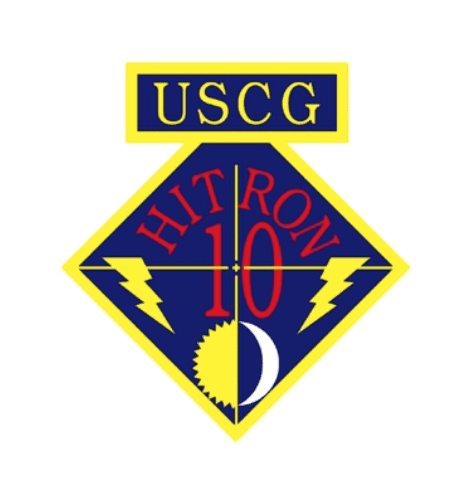
HITRON-10 Proof of Concept Team
AUF Pilots: CDR Mark Torres, LCDR Dennis Dickson, LT, Timothy Tobiasz , CDR Patrick Merrigan , LCDR Stewart Dietrick , LCDR Scottie Womack , LCDR Jason Church , LTJG Vincent Van Ness , LT Thomas Gaffney
AUF Aviation Gunners: AD1 Raymond Stobinski, Jr., AM2 Gordon Brousseau, AE2 Jd Lawrence, AD2 Charlie Hopkins, AD3 Richard Forbes
The Helicopter Interdiction Tactical Squadron Ten (Hitron-10) proof of concept team is cited for outstanding contributions to U.S.. Coast Guard aviation through their superior performance, and having a lasting positive impact in the technical and tactical development of Coast Guard aviation’s airborne use of force (AUF) mission.
From September, 1998, through March, 2000, this selected team of fourteen Coast Guard aviators, nine pilots and five flight mechanics, set out to develop and operationally test new equipment, tactics, and operational procedures, to bring about a non-lethal use of force concept against go-fast boats to tactical reality. During this short 18 month period, the team used leased, non-standard MH-90 helicopters, integrating a mix of lethal and non-lethal technology, along with state-of-the-art sensors, night vision devices, and communications equipment, and developed highly aggressive and effective offensive and defensive tactics never before attempted by rotary wing aircraft.
The squadron completed a series of six operational deployments during operation new frontier, to test the new concept in day and night conditions, successfully interdicting six drug smuggling vessels, apprehending 20 smugglers, and seizing over 14,000 pounds of marijuana and cocaine.
The team’s superior performance and outstanding operational achievement in creating, developing, testing, and successfully implementing the AUF from Coast Guard helicopters to stop go-fast vessels trafficking drugs on the high seas, has had one of the most lasting impacts on Coast Guard aviation in its history, and created a unit that would fundamentally change both Coast Guard aviation and our national drug interdiction strategy for decades to come.
Vice Admiral John P. Currier, USCG (RET.)
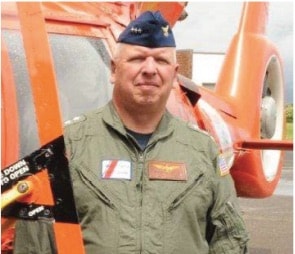
Vice Admiral John P. Currier, Coast Guard Aviator 1877 and Ancient Albatross 23, is recognized for extraordinary achievement and enduring contributions to Coast Guard Aviation as a gifted and courageous pilot, bold innovator, legendary leader, and engaging mentor.
During his first tour of duty as a helicopter pilot, VADM Currier earned the Distinguished Flying Cross and the Harmon Trophy for the night offshore rescue of ten men from a burning fishing boat. He later earned Air Medals along with recognition from national aviation organizations for two other highly challenging rescues.
During the many years he served at USCG headquarters, VADM Currier’s unwavering stewardship resulted in monumental advancements in Coast Guard Aviation. As an Aeronautical Engineering Program Manager, he was directly instrumental in the acquisition of the HH-60J. As Assistant Commandant for Acquisition, he became an ardent advocate of the HC-130J acquisition, taking action to consummate the project while serving as Chief of Staff. Ascending to Vice Commandant, he arranged the transfer of fourteen C-27 medium range surveillance aircraft from the U.S. Air Force when the HC-144 procurement was reduced in scope during a period of increasing operational tempo. He later directed installation of a new mission sensor package, which enhanced C4ISR capability and interoperability with a lower total ownership cost. In response to a serious aviation mishap trend, VADM Currier guided a structured operational risk assessment and directed corrective actions which yielded a remarkable improvement in aviation professionalism and safety. Before retirement, VADM Currier made a legacy contribution to USCG aviation by facilitating a project to provide the first Coast Guard aircraft exhibit in the Smithsonian National Air and Space Museum.
Throughout his 38-year career, VADM John Currier served his country with great skill, devotion, and determination. His caring leadership enhanced the pride and professionalism of thousands of Coast Guard men and women – within the aviation community and beyond.
The Rescue of the Crew of the Scalloper TERRY T
VADM Howard B. Thorsen, USCG (Ret.)
 Vadm Howard B. Thorsen, USCG, CG Aviator 776, Coast Guard helicopter pilot no. 442, and Ancient Albatross no. 13, is cited for his outstanding contributions to U.S. Coast Guard Aviation. Vice Admiral Thorsen, exemplifying superior performance, ushered in a new Coast Guard aircraft with revised operational practices for greater success.
Vadm Howard B. Thorsen, USCG, CG Aviator 776, Coast Guard helicopter pilot no. 442, and Ancient Albatross no. 13, is cited for his outstanding contributions to U.S. Coast Guard Aviation. Vice Admiral Thorsen, exemplifying superior performance, ushered in a new Coast Guard aircraft with revised operational practices for greater success.
In summer, 1974, assigned to the new short-range recovery (SRR) aircraft characteristics board (ACB), Commander Thorsen established new mission-performance standards for SRR helicopters replacing the HH-52A helicopter fleet. Captain Thorsen, assigned from July 1977 to June 1980, as chief, aeronautical engineering division, headed the source selection advisory committee (SSAC), and was designated SRR project officer. Captain Thorsen led teams of U.S. Navy and U.S. Coast Guard specialists through all helicopter acquisition phases. Examination of capabilities and flight tests involved evaluation of candidate aircraft from Textron Bell, Sikorsky Aircraft, and Aerospatiale. Captain Thorsen engaged in contract negotiations and bid reviews, which culminated in a contract for ninety-six, HH-65A aircraft.
The present MH-65E evolved through various modifications from the first HH-65A, which began operations in november 1984. Planned changes to this successful helicopter series project the MH-65’5 useful service life to 2027. Thus, Vice Admiral Thorsen’s expertise as the SSAC head and SRR project officer formed a lasting impact on U.S. Coast Guard aviation for over 40 years.
Vice Admiral Thorsen’s professionalism, leadership, vision, aviation proficiency, and dedication to service are in keeping with the highest standards and traditions of U.S. Coast Guard Aviation and the Coast Guard Aviation Association.
Lieutenant Luke Christopher, USCG Aviator 16
 Lieutenant Luke Christopher is recognized for his superlative contributions to early Coast Guard aviation as a highly experienced instructor and test pilot, at a time when there were few airplanes and even fewer qualified aviators to fly them. He had roughly 4,000 flight hours in military and civil aircraft of every type. Christopher served as a test pilot for the national advisory committee on aeronautics, and as secretary of the contest committee of the national aeronautic association. Commissioned as a lieutenant (temporary) on October 2, 1931, he was directed by the chief, aviation division to inspect, test and ferry many aircraft obtained from a variety of sources during a period of rapid expansion. He served with distinction at air stations cape may and Gloucester, and was assigned as commanding officer of the air patrol detachment at San Diego. Among many exploratory expeditions, he flew the commandant over the great lakes and western division commanders over the pacific northwest, at a time when weather forecasting and navigational aids were primitive. Christopher was killed on December 5, 1936, at Assateague Harbor, Virginia, during the medical evacuation of a tanker seaman with appendicitis. His rd-4 Adhara (v-111) was gaining takeoff speed when a pontoon snagged on a partially submerged fishing net and spun the plane around violently. He received the gold lifesaving medal for “heroic daring in endeavoring to save a man from the perils of the sea”. He was the coast guard’s first direct commissioned aviator.
Lieutenant Luke Christopher is recognized for his superlative contributions to early Coast Guard aviation as a highly experienced instructor and test pilot, at a time when there were few airplanes and even fewer qualified aviators to fly them. He had roughly 4,000 flight hours in military and civil aircraft of every type. Christopher served as a test pilot for the national advisory committee on aeronautics, and as secretary of the contest committee of the national aeronautic association. Commissioned as a lieutenant (temporary) on October 2, 1931, he was directed by the chief, aviation division to inspect, test and ferry many aircraft obtained from a variety of sources during a period of rapid expansion. He served with distinction at air stations cape may and Gloucester, and was assigned as commanding officer of the air patrol detachment at San Diego. Among many exploratory expeditions, he flew the commandant over the great lakes and western division commanders over the pacific northwest, at a time when weather forecasting and navigational aids were primitive. Christopher was killed on December 5, 1936, at Assateague Harbor, Virginia, during the medical evacuation of a tanker seaman with appendicitis. His rd-4 Adhara (v-111) was gaining takeoff speed when a pontoon snagged on a partially submerged fishing net and spun the plane around violently. He received the gold lifesaving medal for “heroic daring in endeavoring to save a man from the perils of the sea”. He was the coast guard’s first direct commissioned aviator.
Rear Admiral Benjamin M. Chiswell
 Rear Admiral Chiswell’s vision of the use of airplanes in the Coast Guard led to meetings between aircraft builder Glenn Curtiss and Treasury Department authorities, from which the concept of Coast Guard Aviation was born. In addition, he created the first operational Air Units and is rightfully regarded as the Father of Coast Guard Aviation.
Rear Admiral Chiswell’s vision of the use of airplanes in the Coast Guard led to meetings between aircraft builder Glenn Curtiss and Treasury Department authorities, from which the concept of Coast Guard Aviation was born. In addition, he created the first operational Air Units and is rightfully regarded as the Father of Coast Guard Aviation.
Rear Admiral Norman B. Hall
 Shipmates with Commander Chiswell and Lieutenant Stone, both members of the Coast Guard Aviation Hall of Fame, Rear Admiral Hall was one of the pioneers of Coast Guard Aviation. He was considered the Coast Guard’s first Aviation Engineer and is recognized for his enduring contributions to Coast Guard Aviation.
Shipmates with Commander Chiswell and Lieutenant Stone, both members of the Coast Guard Aviation Hall of Fame, Rear Admiral Hall was one of the pioneers of Coast Guard Aviation. He was considered the Coast Guard’s first Aviation Engineer and is recognized for his enduring contributions to Coast Guard Aviation.
Commander Elmer Stone
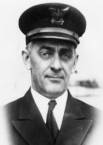 Coast Guard Aviator #1, Commander Stone served as pilot aboard the NC-4 aircraft during the first transatlantic flight of any aircraft in 1919. He set the world speed record for amphibious planes in 1934, and was a pioneer in the use of aircraft for rescue and patrol missions.
Coast Guard Aviator #1, Commander Stone served as pilot aboard the NC-4 aircraft during the first transatlantic flight of any aircraft in 1919. He set the world speed record for amphibious planes in 1934, and was a pioneer in the use of aircraft for rescue and patrol missions.
Captain Carl Christian Von Paulsen
 Designated Coast Guard Aviator #6 in 1920. After Coast Guard Aviation was discontinued due to lack of congressional support, Captain Von Paulsen established a makeshift Air Station using borrowed planes to provide aerial surveillance for liquor smuggling interdiction. His great success in this program led to reestablishment of Coast Guard Aviation.
Designated Coast Guard Aviator #6 in 1920. After Coast Guard Aviation was discontinued due to lack of congressional support, Captain Von Paulsen established a makeshift Air Station using borrowed planes to provide aerial surveillance for liquor smuggling interdiction. His great success in this program led to reestablishment of Coast Guard Aviation.
Captain William Kossler
 As a member of the interagency board researching rotary-wing aircraft, Captain Kossler persuaded military leaders to approve helicopter development by the armed forces. Captain Kossler was designated Coast Guard Aviator #43 and is rightfully regarded as the driving force that brought the helicopter into military aviation.
As a member of the interagency board researching rotary-wing aircraft, Captain Kossler persuaded military leaders to approve helicopter development by the armed forces. Captain Kossler was designated Coast Guard Aviator #43 and is rightfully regarded as the driving force that brought the helicopter into military aviation.
Captain Frank Erickson
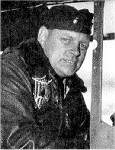 Captain Erickson was designated Coast Guard Aviator #32 in 1935, and became Coast Guard Helicopter Pilot #1. Captain Erickson flew on the first-ever helicopter life-saving mission and is internationally recognized for his pioneering of helicopter rescues, hydraulic hoist systems, and flight stabilization equipment. Erickson Hall, where the Coast Guard’s aircraft flight simulators are located in the Aviation Training Center, Mobile is named in his honor.
Captain Erickson was designated Coast Guard Aviator #32 in 1935, and became Coast Guard Helicopter Pilot #1. Captain Erickson flew on the first-ever helicopter life-saving mission and is internationally recognized for his pioneering of helicopter rescues, hydraulic hoist systems, and flight stabilization equipment. Erickson Hall, where the Coast Guard’s aircraft flight simulators are located in the Aviation Training Center, Mobile is named in his honor.
Commander Stewart Graham
 Commander Graham was designated Coast Guard Aviator #114 in 1942 and Coast Guard Helicopter Pilot #2 in 1943. He was the leading pilot in pioneering helicopter Anti-Submarine Warfare tactics, and trained Navy pilots to conduct these critical missions. Commander Graham was awarded the Distinguished Flying Cross, 2 Air Medals, and was commissioned a Knight of the Order of Leopold of Belgium for helicopter rescues.
Commander Graham was designated Coast Guard Aviator #114 in 1942 and Coast Guard Helicopter Pilot #2 in 1943. He was the leading pilot in pioneering helicopter Anti-Submarine Warfare tactics, and trained Navy pilots to conduct these critical missions. Commander Graham was awarded the Distinguished Flying Cross, 2 Air Medals, and was commissioned a Knight of the Order of Leopold of Belgium for helicopter rescues.
2017 Stewart Graham Ceremony and Reception
Read More About Commander Graham
May 6 2004
CDR Graham inducted into the United States Naval Aviation
Hall of Honor
STEWART R. GRAHAM
COMMANDER, USCG
NAVAL AVIATION PILOT
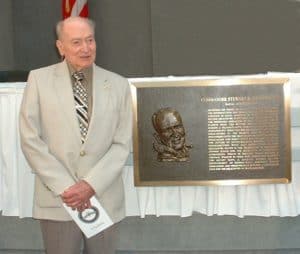 Receiving his wings as an enlisted pilot, Commander Graham pioneered the introduction and development of rotary-wing aircraft in naval aviation. As the Coast Guard’s second helicopter pilot, he laid the groundwork for the shipboard operation of helicopters at sea in flights from the British freighter Dagestan during a transatlantic convoy in World War II. Subsequently perfected the techniques employed by helicopters in the search and rescue role, he performed both the first night helicopter medical evacuation and night hoist pick-up. He helped shape the future of antisubmarine warfare role by experimenting with and instructing fellow helicopter pilots in the techniques of employing dipping sonar for the detection of submerged submarines, which in ensuing years became the central weapon in Cold War operations against the Soviet Navy. Commander Graham became a leading figure in the development of rotary-wing aircraft whose dedication and perseverance ensured a prominent role for the helicopter in peace and war.
Receiving his wings as an enlisted pilot, Commander Graham pioneered the introduction and development of rotary-wing aircraft in naval aviation. As the Coast Guard’s second helicopter pilot, he laid the groundwork for the shipboard operation of helicopters at sea in flights from the British freighter Dagestan during a transatlantic convoy in World War II. Subsequently perfected the techniques employed by helicopters in the search and rescue role, he performed both the first night helicopter medical evacuation and night hoist pick-up. He helped shape the future of antisubmarine warfare role by experimenting with and instructing fellow helicopter pilots in the techniques of employing dipping sonar for the detection of submerged submarines, which in ensuing years became the central weapon in Cold War operations against the Soviet Navy. Commander Graham became a leading figure in the development of rotary-wing aircraft whose dedication and perseverance ensured a prominent role for the helicopter in peace and war.
Commander Stewart R. Graham, U.S. Coast Guard (Ret) Honored as the recipient of “Mark Starr Pioneer Award” for
2002
On 29 January 2002, Captain C. B. “Chuck” Smiley, USN (Ret), Chairman of the Naval Helicopter Historical Society, announced the selection of Commander Stewart R. Graham, U.S. Coast Guard (Ret), as the recipient of
the Society’s “Mark Starr Pioneer Award” for 2002. The award recognizes Commander Graham’s outstanding contribution to the early development of Naval Helicopter Aviation. Smiley will present the award to Graham on 9 April during the 2002 Naval Helicopter Association Symposium in Jacksonville, Florida. The United States naval service’s second designated helicopter pilot, Graham received his flight instruction from the first naval helicopter pilot, Captain Frank A. Erickson, U.S. Coast Guard, at the Sikorsky factory in 1943. Graham’s entire helicopter training prior to designation consisted of three and one-half hours of flight time. Graham spent his career in helicopter development as an instructor, systems and tactics developer and test pilot. His work led directly to the creation of today’s equipment including hoists, sliding hatches, emergency floatation, troop ramps and many other features. Helicopter anti-submarine warfare was a direct result of Graham’s research which he began in 1944. His accomplishments included flying the first ASW mission in wartime from a ship in mid-Atlantic. Later, Graham began the initial development of the dipping sonar which lead to his creation of the initial tactics for modern helicopter ASW. As a Coast Guard Lieutenant, he was instrumental in establishing the first two Navy Helicopter ASW Squadrons, HS-1, and HS-2. He also served as the first helicopter test pilot at the Navy’s Patuxent River Flight Test Center. A true Pioneer, Graham’s list of “firsts” includes many highly publicized helicopter rescues which introduced the public to the new “Angel of Mercy” to which so many owe their lives. The “Mark Starr Pioneer Award” was created to honor the memory of a legendary leader in the naval helicopter community. In 1949, Captain Starr became the Navy’s 121st designated helicopter pilot and began a career which helped write the story of Naval Helicopter Aviation. Following his retirement, he was active in the San Diego area and served for a number of years as a leader in the San Diego Aerospace Museum. His crowning achievement, however, was his contribution to the establishment of the Naval Helicopter Association in 1971. The Naval Helicopter Historical Society (NHHS) was formed in 1997 with the growing awareness that the personal stories of Naval helicopter history were being lost due to the passing of many of the helicopter community’s pioneers. The collection, preservation, and display of personal recollections of former pilots, aircrew and support personnel, together with artifacts, photographs and documents is the goal of the Society as it tells the story of Naval Helicopter Aviation.
Chief Machinist’s Mate Oliver F. Berry
 Chief Machinist’s Mate Berry was one of the world’s first helicopter maintenance specialists. A distinguished expert mechanic on original Coast Guard aircraft including landplanes and seaplanes as well as helicopters, he was lead instructor at the very first United States military helicopter training unit. He contributed significantly to a 1946 world renowned rescue of airliner crash victims in Newfoundland which required the rapid dismantling, air transport and reassembly of vintage USCG helicopters. Of exemplary character, extraordinary technical knowledge, exceptional planning talent, and superior leadership traits, his untiring quest for excellence established the ensuing high standards characterizing Coast Guard aviation maintenance.
Chief Machinist’s Mate Berry was one of the world’s first helicopter maintenance specialists. A distinguished expert mechanic on original Coast Guard aircraft including landplanes and seaplanes as well as helicopters, he was lead instructor at the very first United States military helicopter training unit. He contributed significantly to a 1946 world renowned rescue of airliner crash victims in Newfoundland which required the rapid dismantling, air transport and reassembly of vintage USCG helicopters. Of exemplary character, extraordinary technical knowledge, exceptional planning talent, and superior leadership traits, his untiring quest for excellence established the ensuing high standards characterizing Coast Guard aviation maintenance.
Lieutenant Commander August “Gus” Kleisch
 Lieutenant Commander Kleisch was designated an Enlisted Aviation Pilot in 1935, and later, Coast Guard Aviator no. 109, after commissioning in 1942. In 1943, he qualified as Coast Guard helicopter pilot no. 5, at Coast Guard Air Station Brooklyn, NY, at Floyd Bennett field.
Lieutenant Commander Kleisch was designated an Enlisted Aviation Pilot in 1935, and later, Coast Guard Aviator no. 109, after commissioning in 1942. In 1943, he qualified as Coast Guard helicopter pilot no. 5, at Coast Guard Air Station Brooklyn, NY, at Floyd Bennett field.
In 1945, LCDR Kleisch pioneered the first use of a training helicopter to rescue seven crewmembers of a Canadian PBY aircraft, forced down in a remote area of Labrador, as well as delivering two medical officers to sustain survivors. For his heroism and innovation, he was awarded the Distinguished Flying Cross by the U.S. Navy, and the Canadian Air Force Cross by Canada’s prime minister.
In September 1946, LCDR Kleisch was awarded the Air Medal, and was commissioned a Knight of the Belgian Order of Leopold, for the helicopter rescue of eight survivors of the Sabena airliner crash in Newfoundland. Later in his career, he was awarded a second Air Medal for persisting in a helicopter search that resulted in saving the life of a teenage boy suffering from exposure.
Throughout his Coast Guard career, LCDR Kleisch willingly accepted novel and dangerous missions, and demonstrated sound and superb airmanship in a large variety of seaplanes, landplanes, and helicopters, while saving numerous lives. His courage, innovation, and dedication to duty, reflected great credit upon the U.S. Coast Guard in the international community, as well as among the U.S. Armed Forces.
Lieutenant John A. Pritchard, Jr.
Radioman 1/C Benjamin A. Bottoms
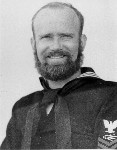
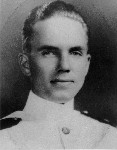
LT Pritchard, Coast Guard Aviator #82, and Radioman 1/C Bottoms made the ultimate sacrifice while attempting to rescue the crew of an Army Air Corps B-17 on a Greenland icecap in 1942.
Captain Donald MacDiarmid
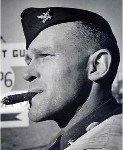 Graduate of the Coast Guard Academy in 1929 and designated Coast Guard Aviator #59, Captain MacDiarmid became the recognized authority in open sea landings and ditchings in seaplanes, and procedures for maritime aviation search, rescue, and survival. Captain MacDiarmid also commanded the first overseas Coast Guard Patrol squadron during World War II.
Graduate of the Coast Guard Academy in 1929 and designated Coast Guard Aviator #59, Captain MacDiarmid became the recognized authority in open sea landings and ditchings in seaplanes, and procedures for maritime aviation search, rescue, and survival. Captain MacDiarmid also commanded the first overseas Coast Guard Patrol squadron during World War II.
The Aviation Maintenance Specialists of World War II
Commissioned from the enlisted ranks during World War II, this select group established the tradition of professionalism and competence that is the hallmark of today’s maintenance and repair activity. They set the standard for the exceptional level of safety and readiness of the Coast Guard’s current Aviation Operations.
Lieutenant Jack Rittichier
Designated Coast Guard Aviator #997, 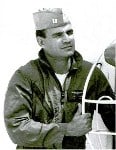 Lieutenant Rittichier volunteered for an exchange tour with the Air Force and served as a helicopter rescue pilot in Viet Nam. Lieutenant Rittichier was killed while attempting to rescue a downed airman in hostile territory on June 9th, 1968. Lieutenant Rittichier was awarded the Silver Star, the Distinguished Flying Cross, and the Purple Heart. A hangar at Coast Guard Air Station Detroit is dedicated in his honor.
Lieutenant Rittichier volunteered for an exchange tour with the Air Force and served as a helicopter rescue pilot in Viet Nam. Lieutenant Rittichier was killed while attempting to rescue a downed airman in hostile territory on June 9th, 1968. Lieutenant Rittichier was awarded the Silver Star, the Distinguished Flying Cross, and the Purple Heart. A hangar at Coast Guard Air Station Detroit is dedicated in his honor.
R 162031Z SEP 03 ZUI ASN-A00259000386 ZYB
FM COMDT COGARD WASHINGTON DC//G-C//
TO ALCOAST
BT
UNCLAS //N05360//
ALCOAST 430/03
COMDTNOTE 5360
SUBJ: RETURN OF LT JACK RITTICHIER, USCG, MISSING IN ACTION (MIA)
1. IT IS MY DUTY TO REPORT THAT ALL HANDS ARE NOW ACCOUNTED FOR WITH THE RECOVERY OF LT JACK RITTICHIER, THE COAST GUARDS ONLY VIETNAM-ERA MISSING IN ACTION (MIA).
2. LT RITTICHIER, WHILE SERVING WITH THE U.S. AIR FORCE IN A PILOT EXCHANGE PROGRAM, WAS DECLARED MIA ON 9 JUNE 1968 AFTER HE PILOTED A JOLLY GREEN GIANT HELICOPTER HH-3E, WITH THREE USAF CREWMEN OUT OF DA NANG, REPUBLIC OF VIETNAM. WHILE ON A MISSION TO RESCUE A DOWNED AMERICAN PILOT, THE HELICOPTER WAS HIT BY AUTOMATIC GUNFIRE AND CRASHED KILLING ALL ONBOARD. SINCE THE CREWS REMAINS COULD NOT BE RECOVERED THEY WERE LISTED AS MIA. DURING HIS CAREER, LT RITTICHIER WAS AWARDED THREE DISTINGUISHED FLYING CROSS MEDALS, FOUR AIR MEDALS AND WAS POSTHUMOUSLY AWARDED THE SILVER STAR AND PURPLE HEART. LT RITTICHER IS SURVIVED BY HIS WIDOW, CAROL WYPICK, AND TWO BROTHERS, HENRY AND CARL DAVID RITTICHIER. 3. ON MONDAY, 06 OCTOBER 2003, ARRIVAL HONORS WILL BE HELD AT ANDREWS AFB AT 1120. FUNERAL SERVICES WILL BE HELD ON 06 OCTOBER 2003 AT 1300 AT THE OLD POST CHAPEL ON FORT MYER FOLLOWED BY INTERMENT WITH FULL MILITARY HONORS AT ARLINGTON NATIONAL CEMETERY.
4. LT RITTICHIER ENBODIED OUR CORE VALUES OF HONOR, RESPECT, AND MOST ESPECIALLY DEVOTION TO DUTY. HE REPRESENTS A PROUD LEGACY OF COAST GUARD MEN AND WOMEN PLACING THEMSELVES IN HARMS WAY EVERY DAY IN THE SERVICE OF THEIR COUNTRY AND FELLOW MAN. LT RITTICHIER MADE THE ULTIMATE SACRIFICE; WE SHOULD NEVER FORGET HIS EFFORTS AND THE SACRIFICES OF THE THOUSANDS OF COAST GUARD MEN AND WOMEN WHO SERVED SO BRAVELY IN OUR SERVICE OVER THE LAST 213 YEARS.
5. I ASK EVERY COAST GUARD UNIT TO OBSERVE A MOMENT OF SILENCE AT 1300 ON 06 OCTOBER IN MEMORY OF LT RITTICHIER AND ALL OUR SERVICE MEMBERS WHO HAVE SERVED WITH HONOR. THE MEN AND WOMEN OF YESTERDAY AND TODAY ARE OUR HERITAGE AND THE COAST GUARD OF TOMORROW SHOULD NEVER FORGET THEIR SACRIFICES AND ACTIONS. ALL COAST GUARD UNITS, NOT UNDER WAY, SHALL DISPLAY THE NATIONAL ENSIGN AT HALF-MAST FROM 1300 TO SUNSET ON 06 OCTOBER 2003.
6. AREA COMMANDERS, DISTRICT COMMANDERS AND MLC COMMANDERS TAKE APPROPRIATE ACTION TO ADVISE RETIRED MEMBERS RESIDING IN THEIR DISTRICT. HEADQUARTERS SUPPORT COMMAND (A-4) IS RESPONSIBLE FOR THE WASHINGTON, DC AREA.
7. DONATIONS, IN LIEU OF FLOWERS, MAY BE MADE TO THE AMERICAN CANCER SOCIETY, P.O. BOX 102454, ATLANTA, GEORGIA 30368-2454.
8. INTERNET RELEASE AUTHORIZED.
9. ADM THOMAS H. COLLINS, COMMANDANT, SENDS.
BT
COMBAT AIR RESCUE PILOTS 1967-1972
LT Richard. V. Butchka
LCDR Joseph L. Crowe
LT Lance A. Eagan
LT Robert E. Long
LTJames M. Loomis
LT Roderick Martin III
LCDR Lonnie L. Mixon
LT James C. Quinn
LT Robert T. Ritchie
LT Jack C. Rittichier
LT Jack K. Stice
 During the Vietnam conflict, these United States Coast Guard Aviators voluntarily served with high honor and distinction with the U.S. Air Force Aerospace Rescue and Recovery forces in Southeast Asia in the dual role of aircraft commanders and instructor pilots. They regularly risked their lives flying into harms way to save airmen in peril of death or capture. Their significant contributions and exceptional performance were highly commended by the Air Force with the award of four Sliver Stars, sixteen Distinguished Flying Crosses, and eighty-six Air Medals in addition to many other recognitions. They carried out their noble mission with heroism and a focus on duty, honor, country and the Coast Guard. Their actions brought honor on themselves, the United States of America, the U.S. Air Force and the U.S. Coast Guard.
During the Vietnam conflict, these United States Coast Guard Aviators voluntarily served with high honor and distinction with the U.S. Air Force Aerospace Rescue and Recovery forces in Southeast Asia in the dual role of aircraft commanders and instructor pilots. They regularly risked their lives flying into harms way to save airmen in peril of death or capture. Their significant contributions and exceptional performance were highly commended by the Air Force with the award of four Sliver Stars, sixteen Distinguished Flying Crosses, and eighty-six Air Medals in addition to many other recognitions. They carried out their noble mission with heroism and a focus on duty, honor, country and the Coast Guard. Their actions brought honor on themselves, the United States of America, the U.S. Air Force and the U.S. Coast Guard.
Commander Frank Lawlor Shelley
Then-LCDR Shelley exercised extraordinary leadership, management, and technical skills in development of operational flight and training procedures to test, acquire, and deploy the Sikorsky HH-52A helicopter. This aircraft established the primacy of the helicopter as a rescue vehicle, changing the face of Search and Rescue. As a graduate of Navy Test Pilot School, he used keen technical and interpersonal skills to complete the evaluation in only four months. All modifications were accepted by the manufacturer. During evaluation, LCDR Shelley applied turbine engine and translational lift characteristics of the helicopter to develop a pilot-controlled procedure to transition the helicopter from forward flight to a hover without visual reference to the sea surface. This “beep to a hover” maneuver subsequently saved countless lives. He was instrumental in the development of a new Coast Guard standardized training/transition policy leading to establishment of a Basic Operational Training Unit at Savannah and eventually Aviation Training Center Mobile. After acquisition of the first of 99 HH-52A helicopters in 1963, LCDR Shelley co-authored a plan for future operating locations to complete implementation of the Aviation Master Plan. In nearly 50 years thereafter, the only modifications were the decommissioning of one air station and consolidation of two others.
Commander Gilbert “Gib” Brown
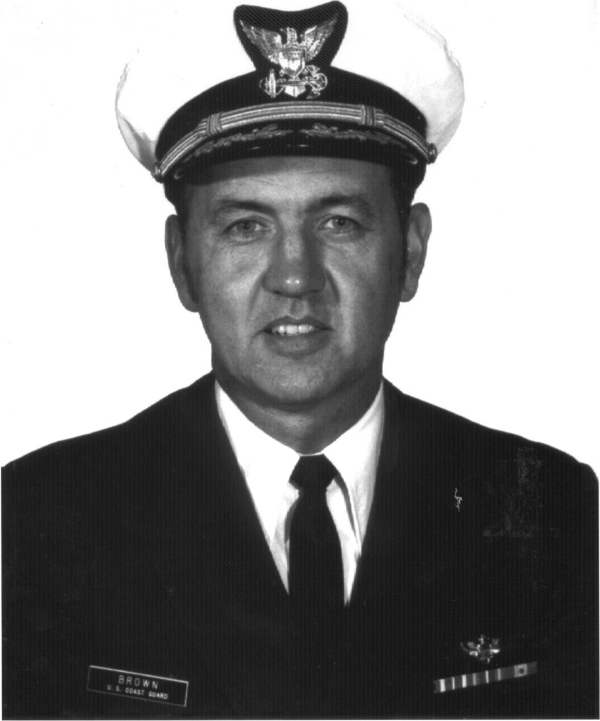 Graduated from the Coast Guard Academy in 1956, Coast Guard Aviator #795, CDR Brown was the architect of the Coast Guard flight simulation training program. Over a four year period, he sought funding, oversaw design, procurement, construction and implementation of the first full motion flight simulators in the country. The flight simulators were fully integrated with pilot training and revolutionized Coast Guard flight training by reducing training costs and significantly improving aviation safety. The Coast Guard was the first service that authorized instrument ratings based strictly on simulator flight time.
Graduated from the Coast Guard Academy in 1956, Coast Guard Aviator #795, CDR Brown was the architect of the Coast Guard flight simulation training program. Over a four year period, he sought funding, oversaw design, procurement, construction and implementation of the first full motion flight simulators in the country. The flight simulators were fully integrated with pilot training and revolutionized Coast Guard flight training by reducing training costs and significantly improving aviation safety. The Coast Guard was the first service that authorized instrument ratings based strictly on simulator flight time.
Master Chief Aviation Survivalman
Larry E. Farmer
 Master Chief Petty Officer Farmer developed and implemented USCG Rescue Swimmer training and operational programs. Volunteering for and successfully completing the U.S. Navy Rescue Swimmer School, he then coordinated with the staff of the Coast Guard Commandant and assigned instructors to develop specific operational and safety procedures and equipment necessities reflecting unique Coast Guard mission requirements. His exemplary professional knowledge and capability, superior leadership and character traits, boundless energy and high performance standards were greatly responsible for a successful accelerated service-wide establishment of a highly effective and nationally acclaimed rescue program directly responsible for saving thousands of lives.
Master Chief Petty Officer Farmer developed and implemented USCG Rescue Swimmer training and operational programs. Volunteering for and successfully completing the U.S. Navy Rescue Swimmer School, he then coordinated with the staff of the Coast Guard Commandant and assigned instructors to develop specific operational and safety procedures and equipment necessities reflecting unique Coast Guard mission requirements. His exemplary professional knowledge and capability, superior leadership and character traits, boundless energy and high performance standards were greatly responsible for a successful accelerated service-wide establishment of a highly effective and nationally acclaimed rescue program directly responsible for saving thousands of lives.
Commander Bruce E. Melnick
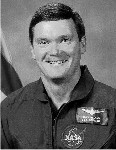 Designated Coast Guard Aviator #1671 and Coast Guard Astronaut #1, Commander Melnick graduated from the United States Coast Guard Academy in 1972. Following a tour at sea, then Navy Flight Training, he was designated as Coast Guard Aviator in 1974. Commander Melnick was selected for the NASA astronaut program in 1987 and designated the first Coast Guardsman to fly in space. He flew on Discovery in 1990 and Endeavor in 1992.
Designated Coast Guard Aviator #1671 and Coast Guard Astronaut #1, Commander Melnick graduated from the United States Coast Guard Academy in 1972. Following a tour at sea, then Navy Flight Training, he was designated as Coast Guard Aviator in 1974. Commander Melnick was selected for the NASA astronaut program in 1987 and designated the first Coast Guardsman to fly in space. He flew on Discovery in 1990 and Endeavor in 1992.
Captain Daniel Christopher Burbank
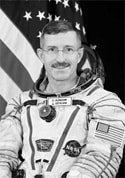 Graduated from the U.S. Coast Guard Academy in 1985, with a BS in electrical engineering. After a tour afloat, CAPT Burbank received his naval aviator wings in 1988, and was designated CG aviator no. 2672. He served as the aeronautical engineering officer, search and rescue, and instructor pilot at three CG air stations, where he amassed over 3,500 flight hours, while flying more than 1,800 missions, including over 300 SAR cases, as an HH-3F and HH-60J pilot and aircraft commander.
Graduated from the U.S. Coast Guard Academy in 1985, with a BS in electrical engineering. After a tour afloat, CAPT Burbank received his naval aviator wings in 1988, and was designated CG aviator no. 2672. He served as the aeronautical engineering officer, search and rescue, and instructor pilot at three CG air stations, where he amassed over 3,500 flight hours, while flying more than 1,800 missions, including over 300 SAR cases, as an HH-3F and HH-60J pilot and aircraft commander.
In May 1996, then LCDR Burbank was selected by the National Aeronautics and Space Administration as an astronaut candidate, and later was designated CG astronaut no. 2. Before flying, he helped design a much needed avionics upgrade for the nation’s space shuttle. He served as mission specialist on STS-106 in 2000, which delivered more than three tons of equipment to help build the international space station. In 2006, he again served as mission specialist on STS-115, and executed a seven hour space walk for maintenance on the ISS.
After leaving NASA in 2006, CAPT Burbank returned to the U.S. Coast Guard academy in 2007 as a professor, where he instructed cadets in several engineering disciplines. After 24 years of Coast Guard service, CAPT Burbank retired in 2009 from active duty.
He then returned to NASA and the space program, participating in several ISS expedition missions, specifically ISS 29 and ISS 30, where he was the commander. In total, CAPT Burbank spent over 248 days in space.
His medals include the Defense Superior Service Medal with one star, Legion of Merit, Air Medal, two CG Commendation Medals, NASA Exceptional Service Medal, NASA Space Flight Medal with three stars, and other recognitions.
2016 Roost Recognition: VIDEO PHOTO GALLERY
Captain Leslie (Les) High, USCG (ret.)
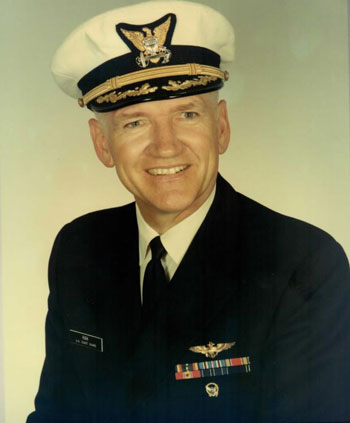 Graduated from the us Coast Guard academy in 1946.
Graduated from the us Coast Guard academy in 1946.
After two tours aboard Coast Guard cutters, and a tour as commanding officer of loran station Kwajalein, he attended naval flight school and received his wings of gold in 1950. He was designated CG Aviator no. 549. During his early career, he flew both fixed and rotary wing aircraft, amassing over 5,500 accident free flight hours at four different air stations.
While assigned at the U.S. Coast Guard academy, as the only aviation instructor, he developed a keen interest in improving the training of Coast Guard aviation personnel.
As commanding officer of CG Air Station Savannah’s BOTU, he oversaw the development of vastly improved training procedures for helicopter aircrew. His next assignment in 1966 was as project officer/PXO of the new CG Air Station Mobile, AL. This assignment permitted him to expand his efforts to improve the training of all fixed-wing and rotary-wing aviators, and led to the eventual establishment of the CG Aviation Training Center, Mobile,AL, in 1972.
During his headquarters tour as chief of education, training and procurement, he established policies and procedures which led to the establishment in 1978 of the Aviation Technical Training Center, Elizabeth City, NC.
Captain High’s dedication to improving the training and standardization of CG pilots and aircrew personnel, was directly responsible for safer and more efficient aviation operations over the last 50 years.
2016 Roost Recognition: VIDEO PHOTO GALLERY
LCDR JOHN E. “BEAR” MOSELEY, USCG

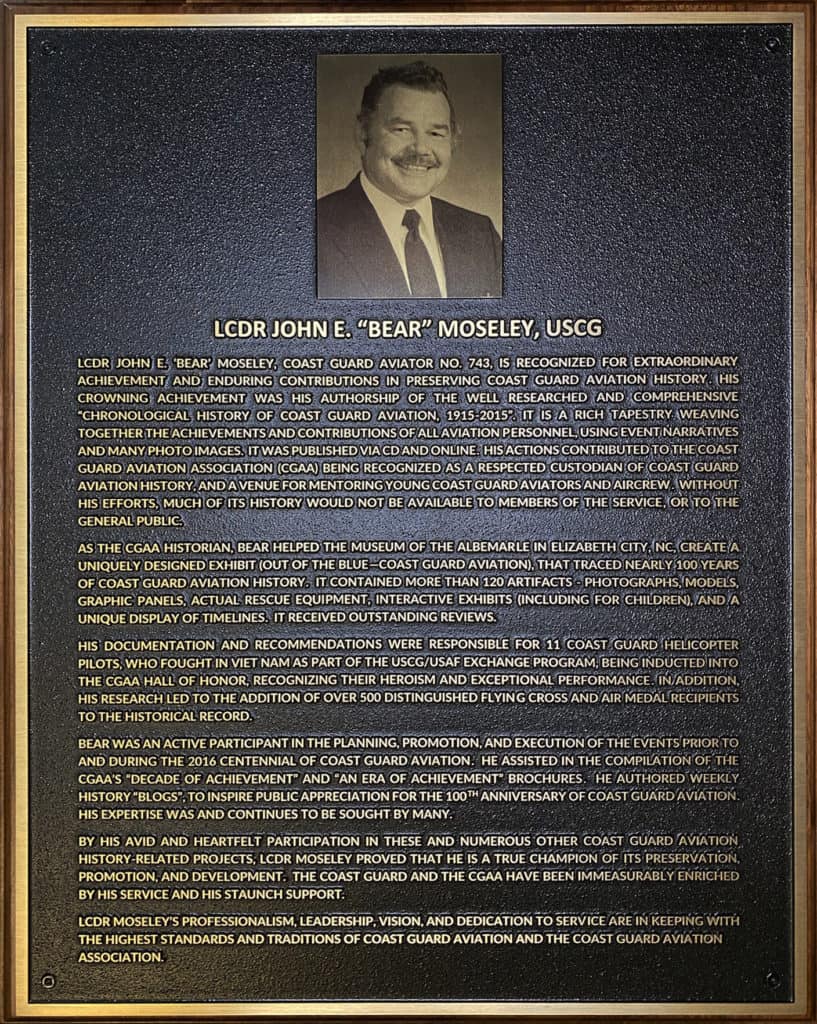
LCDR john ‘Bear” Moseley, Coast Guard Aviator no. 743, recognized for extraordinary achievement and enduring contributions in preserving Coast Guard aviation history. His crowning achievement was his authorship of the well-researched and comprehensive “chronological history of coast guard aviation, 1915-2015”. It is a rich tapestry weaving together the achievements and contributions of all aviation personnel, using event narratives and many photo images. It was published via cd and online. His actions contributed to the Coast Guard Aviation Association (CGAA) being recognized as a respected custodian of coast guard aviation history, and a venue for mentoring young Coast Guard aviators and aircrew. Without his efforts, much of its history would not be available to members of the service, or to the general public.
As the CGAA historian, Bear helped the museum of the Albemarle in Elizabeth City, NC, create a uniquely designed exhibit (Out of the Blue – Coast Guard Aviation), that traced nearly 100 years of Coast Guard aviation history. It contained more than 120 artifacts – photographs, models, graphic panels, actual rescue equipment, interactive exhibits (including for children), and a unique display of timelines. It received outstanding reviews.
His documentation and recommendations were responsible for 11 Coast Guard helicopter pilots, who fought in Vietnam as part of the USCG/USAF exchange program, being inducted into the CGAA hall of honor, recognizing their heroism and exceptional performance. In addition, his research led to the addition of over 500 distinguished flying cross and air medal recipients to the historical record.
Bear was an active participant in the planning, promotion, and execution of the events prior to and during the 2016 centennial of Coast Guard aviation. He assisted in the compilation of the CGAA’s “decade of achievement” and “an era of achievement” brochures. He authored weekly history “blogs”, to inspire public appreciation for the 100th anniversary of Coast Guard aviation. His expertise was and continues to be sought by many.
By his avid and heartfelt participation in these and numerous other Coast Guard aviation history-related projects, LCDR Moseley proved that he is a true champion of its preservation, promotion, and development. The Coast Guard and the CGAA have been immeasurably enriched by his service and his staunch support.
LCDR Moseley’s professionalism, leadership, vision, and dedication to service are in keeping with the highest standards and traditions of coast guard aviation and the coast guard aviation association.
ASM SCHOOL INSTRUCTORS
Sept 1987 – June 1990

ASM1 TODD “TONY” ADAMS
ASMC GARY A. COX
ASMC KEITH R. JENSEN
ASM1 KIRK S. NEPRUD
ASM1 WILLIAM “BILL” RANKIN
ASM2 JOHN L. UNGEFUG
ASMC RONALD “RON” BUTCHER
ASM1 JOSEPH “BUTCH” FLYTHE
ASMCS ERROL A. KUBICKI
ASM1 GARY M. PARSONS
ASM1 JOSE “JOE” RODRIGUEZ
ASM1 GEORGE A. WATERS
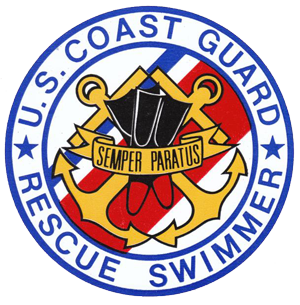 These energetic, collaborative, and problem-solving, aviation Survivalman (ASM) instructors, within a varyingly challenging period of seismic change, created the next generation of their expanding cadre, retained the flightcrew maturity and survival equipment expertise of some fine petty officers, and set a foundation for future training and operational successes in USCG aviation. They shepherded rookies and older ASMs alike, on a path of triumph, through the rigorous training required to become helicopter rescue swimmers (RSS). When the Navy’s RS school was suddenly shut down for six months, they developed and conducted a USCG RS course, whose grads then enabled seven critical units to start deploying RSS. These and many other efforts contributed mightily in making the USCG helicopter rescue swimmer program come to fruition, and to sustain itself into the future.
These energetic, collaborative, and problem-solving, aviation Survivalman (ASM) instructors, within a varyingly challenging period of seismic change, created the next generation of their expanding cadre, retained the flightcrew maturity and survival equipment expertise of some fine petty officers, and set a foundation for future training and operational successes in USCG aviation. They shepherded rookies and older ASMs alike, on a path of triumph, through the rigorous training required to become helicopter rescue swimmers (RSS). When the Navy’s RS school was suddenly shut down for six months, they developed and conducted a USCG RS course, whose grads then enabled seven critical units to start deploying RSS. These and many other efforts contributed mightily in making the USCG helicopter rescue swimmer program come to fruition, and to sustain itself into the future.